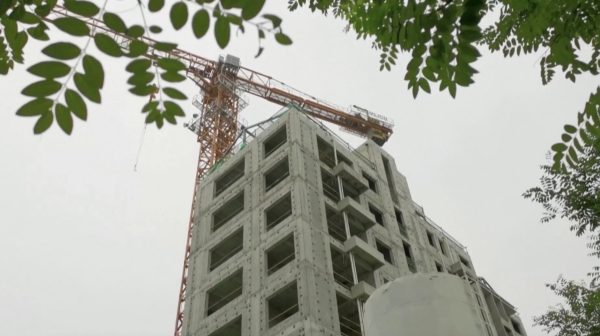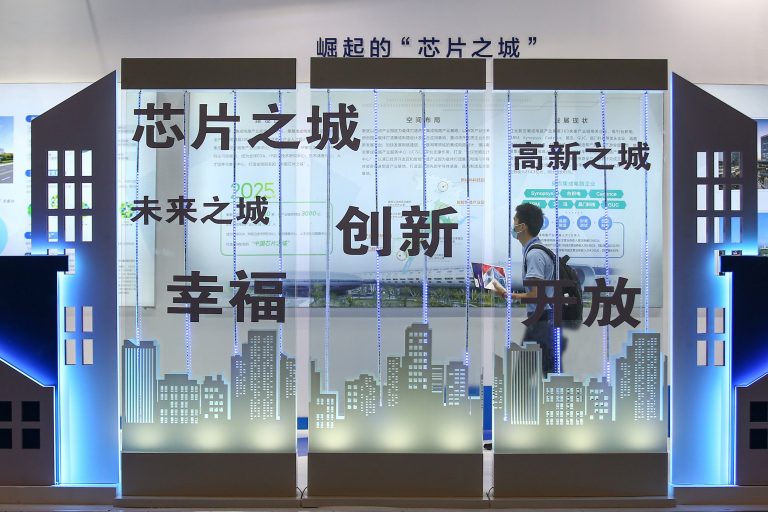Beijing is planning a move to alleviate some of the pressure on debt-laden local governments involving 1.5 trillion yuan (about US$200 billion) in special financing to repay their loans, according to an Aug. 20 report by Chinese investigative news outlet Caixin.
The bonds will be offered to 12 regions chiefly in western China that are currently struggling with their debts owed to the Chinese central government. Among the 12 are the provinces of Yunnan, Guizhou, Tianjin, Shaanxi, and Chongqing.
If confirmed, the 1.5 trillion yuan in “debt swap” bonds would represent a major compromise on the part of the Chinese Communist Party (CCP) central authorities, which in recent years has preferred to allow regional governments to take responsibility for their own insolvency crises.
But before that, Chinese authorities had rolled out several rounds of generous stimulus financing and debt swaps over the course of a decade starting in 2008, when Beijing deployed 4 trillion yuan in funds to help the Chinese economy weather the global financial crisis.
- As China’s Finances Worsen, Thug-like Local Governments Impose a ‘Fines Economy’
- As US Economy Stagnates, 30-year Mortgage Rate Soars
- Data Shows Massive Decline in US-China Trade
100-trillion debt
Prior to 2008, Chinese local governments maintained conservative budgets and had few financial obligations.
Success
You are now signed up for our newsletter
Success
Check your email to complete sign up
However, local governments took on unsustainable amounts of debt, with the total ballooning to over 100 trillion yuan — roughly equal to China’s entire GDP — by 2023.
Meanwhile, economic growth has not kept pace, with the Sino-U.S. trade war, the “zero-COVID” lockdown policies implemented by the CCP, precarious real estate market, and a swath of political crackdowns all dampening business and consumption in mainland China, which now suffers a burgeoning unemployment rate of over 20 percent.
Local governments in backwater provinces such as Yunnan and Guizhou, located in the southwest, have already gone public about their debt woes in an apparent effort to petition Beijing for aid.
Analysts also believe that the People’s Republic is seeing severe deflation as wages and profits fall. According to the Chinese National Bureau of Statistics (NBS), 90 percent of the Chinese working population makes less than 5,000 yuan a month (about US$687) — and more people are joining that income bracket.
About 600 million people or around half of the population makes less than 1000 yuan (around US$154) a month.
Stopgap measures
According to the Caixin report, the central government’s money is likely to come with political strings attached. In one southwestern province, among the requirements for the local governments to receive funding was that they had to downsize their civil service by 20 percent.

SinoInsider, a risk consultancy that specializes in Chinese politics, wrote in an Aug. 24 newsletter analysis that the 1.5 trillion-yuan debt swap plan “is likely the result of a compromise between the central government and distressed local governments in resolving the exploding local government debt crisis.”
Previously, the CCP has emphasized the importance of local governments being responsible for their own financial obligations, using such rhetoric as “if it’s your kid, you take care of it.”
While Beijing’s reported moves show it is looking for ways to address the debt crises on the ground, “the special financing bond arrangement is a de facto debt swap instead of an outright bailout, and Beijing is still working within the debt limits approved by the National People’s Congress,” SinoInsider observed.
At the same time, the solution would be little more than a stopgap measure to shore up local debts, and simply push the problems further down the road, the analysts warn. A similar remedy that the central authorities could attempt is to have banks extend maturity loans to local government financing vehicles (LGFVs) to ultra-long terms and cut interest rates.
SinoInsider in its Aug. 24 analysis also scrutinized the Aug. 21 announcement of the Chinese government’s fifth economic census, as well as the alleged establishment of a “personal income and property information registration system.”
According to available information, the database appears to be aimed at giving Beijing a clearer idea of the incomes of wealthy individuals, and thus subjecting them to increased supervision and taxation.
Last November, Beijing announced a new “Golden Tax system” to better facilitate the collection of value added taxes; the new moves appear to be a progression of those plans.
But while the improved tax system could allow the CCP to skim more revenue from wealthy Chinese and from the populace at large in a trickle-down fashion, it would also dampen support for the Party’s rule across China, especially as the economy continues to decline and take its toll on livelihoods nationwide.
“There are numerous examples in Chinese imperial history of the court taxing the elites to preserve the dynasty, only for the court to lose support of the elites and hasten the end of the dynasty,” SinoInsider noted.














